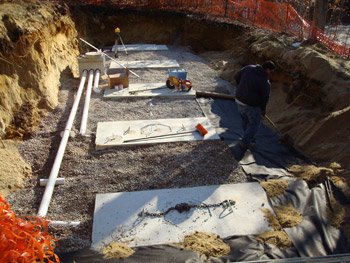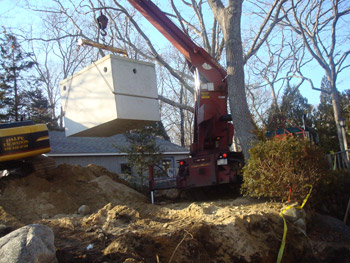How Does a Septic System Work?
There are two main parts to the basic septic system: the septic tank and the drainfield.
The Septic Tank
Household wastewater first flows into the septic tank where it should stay for at least a day. In the tank, heavy solids in the wastewater settle to the bottom forming a layer of sludge, and grease and light solids float to the top forming a layer of scum.
The sludge and scum remain in the tank where naturally occurring bacteria work to break them down. The bacteria cannot completely break down all of the sludge and scum, however, and this is why septic tanks need to be pumped periodically.
The separated wastewater in the middle layer of the tank is pushed out into the drainfield as more wastewater enters the septic tank from the house. If too much water is flushed into the septic tank in a short period of time, the wastewater flows out of the tank before it has had time to separate. This can happen on days when water use is unusually high (laundry day, for example), or more often if the septic tank is too small for the needs of the household.
The Drainfield (or Leaching Field)
When wastewater leaves a septic tank too soon, solids can be carried with it to the drainfield. Drainfields provide additional treatment for the wastewater by allowing it to trickle from a series of perforated pipes, through a layer of gravel, and down through the soil.
The soil acts as a natural filter and contains organisms that help treat the waste. Solids damage the drainfield by clogging the small holes in the drainfield pipes and the surrounding gravel, and excess water strains the system unnecessarily.


